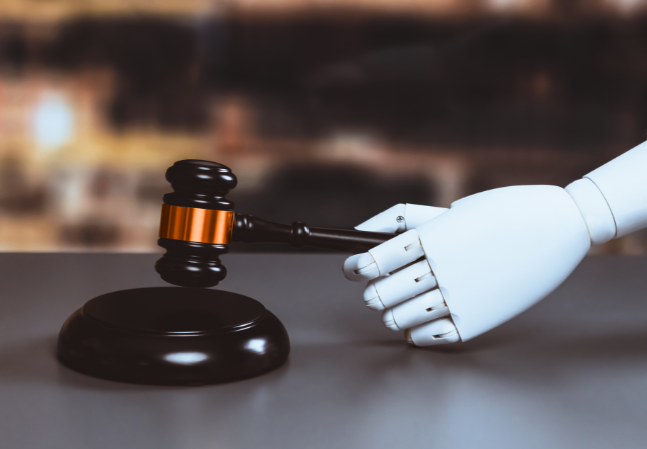- videocam On-Demand Webinar
- signal_cellular_alt Beginner
- card_travel Bankruptcy
- schedule 60 minutes
Advice for New Bankruptcy Lawyers on Drafting and Litigating Motions for Relief From Stay
Standing, Papers to be Filed, Timing, Notice, Defenses, Discovery, Presenting Evidence, Appeals, and More
Welcome! Save 30% on all CLE, CPE, and Professional Skills webinars, plus 15% off any annual pass with code HOLIDAY25
About the Course
Introduction
This CLE webinar will discuss solutions to the practical and procedural issues that new attorneys face when preparing and litigating motions for relief from stay based on Bankruptcy Code Section 362(d), focusing on (d)(1) and (d)(2). The panel will discuss standing, what needs to be filed, timing and notice issues, bankruptcy court jurisdiction, discovery and evidentiary issues, appeals, and more so that new attorneys can feel confident on even the first assignment.
Description
A new attorney asked to prepare a motion for relief from stay is really being asked to create and assemble a multitude of different filings, anticipate evidentiary issues, and craft complete and meaningful relief in the proposed order that does not lead to more litigation. Attorneys asked to respond to and defend the motions likewise have more than just a simple response to think about.
Attorneys preparing to argue or defend the motion need to know what kind of evidence will be needed and what is likely to be available and admissible in court. If valuation is an issue, often there is neither the time nor the budget to secure a formal appraisal, so knowing who is qualified to testify as to the value of various kinds of tangible and intangible property is important.
Almost all courts now ask attorneys to submit proposed orders, and these should never be drafted casually. The relief granted should be concrete and clear and encompass all the steps and activities needed to accomplish the creditor's ends. Many attorneys have learned the hard way that relief to foreclose, without more, may not include the right to pay the defaulted debt.
Listen as this panel of bankruptcy experts offers best practices for drafting the necessary papers to obtain relief for the stay and best practices for litigating the requests.
Presented By

Mr. McMullen is a board-certified Creditors’ Rights Specialist. He also regularly represents businesses in the highly regulated food and beverage industry and in other government affairs matters. Mr. McMullen is one of a small but select group of Tennessee attorneys who have completed a rigorous certification process established by the American Board of Certification. Austin zealously represents his clients in bankruptcy, commercial and real estate litigation, workout, judgment enforcement and execution matters. He also serves as the receiver of distressed businesses to successfully resolve and satisfy creditor claims.

Mr. Norton focuses his practice in the business bankruptcy area, dealing in all aspects of bankruptcy cases, creditor rights and insolvency. With more than 25 years of practice, he has represented just about every kind of client interest expected in bankruptcy cases. His main focus now is Chapter 11 business cases – representing debtors, secured creditors, unsecured creditors, committees and trustees.
-
This 60-minute webinar is eligible in most states for 1.0 CLE credits.
-
Live Online
On Demand
Date + Time
- event
Monday, November 4, 2024
- schedule
1:00 p.m. ET./10:00 a.m. PT
- Nature and grounds for relief
- Motions under Section 362(d)(1)--for cause
- Bad faith other than 362(d)(4)
- Lack of adequate protection: what it is and is not
- Types of evidence available early in the case
- Motions under Section 362(d)(2)
- Proving lack of equity
- Definitions of equity
- Property with volatile value
- Discovery and obtaining formal valuation
- Using non-experts to demonstrate value or equity
- Proving not necessary to an effective reorganization
- Proving lack of equity
- Motions under Section 362(d)(1)--for cause
- Standing
- Timing of motion and ability to renew it later; preclusive effects
- Drafting proposed orders
- Types of relief available
- Avoiding ambiguity while retaining flexibility
- Describing the right to pursue remedies
- Reserving bankruptcy court jurisdiction
- Waiver of effective date of order
- Dealing with potential surpluses
- "Agreed" or consent orders: "drop dead" or self-executing orders after default
- Notices of hearings
- Relelvant rules
- Addressing and serving non-electronic notices to persons who have not appeared in the case
- Pitfalls of failing to give correct and complete notice
- Responding to motions for relief: standing
- Best practices when arguing the motion
The panel will review these and other key issues:
- Who is a party in interest for purposes of Section 362?
- How does the nature of "cause" change as the case progresses?
- When do state courts have concurrent jurisdiction over whether the automatic stay remains in effect?
Unlimited access to premium CLE courses:
- Annual access
- Available live and on-demand
- Best for attorneys and legal professionals
Unlimited access to premium CPE courses.:
- Annual access
- Available live and on-demand
- Best for CPAs and tax professionals
Unlimited access to premium CLE, CPE, Professional Skills and Practice-Ready courses.:
- Annual access
- Available live and on-demand
- Best for legal, accounting, and tax professionals
Unlimited access to Professional Skills and Practice-Ready courses:
- Annual access
- Available on-demand
- Best for new attorneys
Related Courses

Bankruptcy and Financial Transactions Using Stablecoins: Navigating the GENIUS Act and the New Financial Frontier
Tuesday, February 3, 2026
1:00 p.m. ET./10:00 a.m. PT
Recommended Resources

Transforming CLE from a Requirement to a Career Advantage
- Learning & Development
- Career Advancement
- Talent Development

Beyond Law School: Tackling the Realities of Modern Legal Practice
- Learning & Development
- Business & Professional Skills
- Career Advancement

